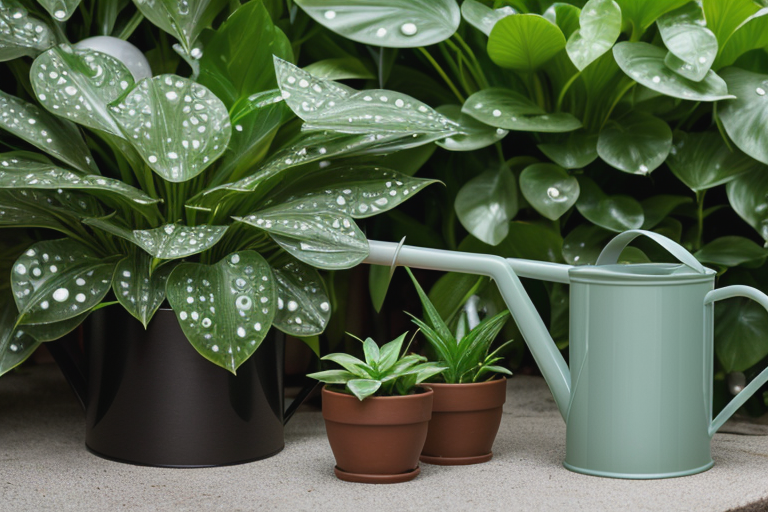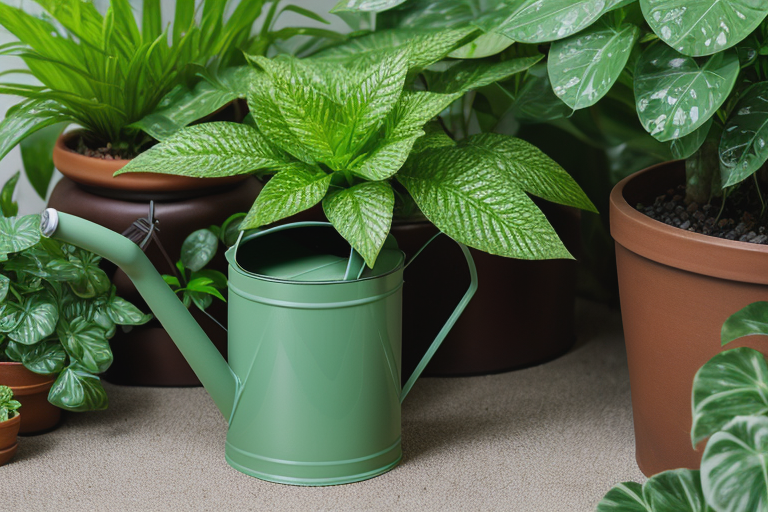Master proper watering techniques with our science-based guide. Understanding the biology behind plant hydration will transform your gardening from guesswork into precision care.

Why Water Matters: The Science Behind Hydration
Water isn't just something plants drink—it's the foundation of their entire biological system. Understanding what water does inside plants helps explain why proper watering technique matters so much.
Essential Functions of Water in Plants
- Photosynthesis: Water provides the electrons that power sugar production
- Nutrient transport: Dissolved minerals travel through the plant's vascular system
- Structure maintenance: Water pressure keeps cells rigid and plants upright
- Temperature regulation: Evaporation through leaves cools the plant
- Chemical reactions: Most plant metabolism requires water as a medium
Factors That Determine Water Needs
The amount of water a plant requires depends on three core variables that work together to determine hydration demand.
| Variable | Impact on Water Need |
|---|---|
| Plant Type | Succulents & cacti → low; leafy annuals → high |
| Soil Texture | Sandy soils drain fast → more frequent water; clay → less frequent but deeper |
| Climate/Season | Hot, dry weather → up to 30% more water |
The "1 Inch Rule"
Rule of thumb: Most garden vegetables and ornamental beds thrive with about 1 inch (2.5 cm) of water each week. This can be delivered in a single deep watering or split into two lighter sessions.
How Often Should You Water?
Instead of relying on a calendar, use soil moisture as your primary cue. Plants need water when the soil reaches a certain dryness level, not on a rigid schedule.
Three Simple Methods to Test Moisture
- Finger test: Insert 2-3 inches into the soil; if it feels dry, water
- Moisture meter: A cheap probe gives a numeric reading (0 = dry, 100 = saturated)
- Weight check: Lift the pot; a lighter pot signals water loss
Typical Watering Intervals
Note: These are average conditions - always test soil moisture first
| Plant Category | Indoor | Outdoor |
|---|---|---|
| Succulents & Cacti | Every 2–4 weeks | Every 3–6 weeks |
| Herbs (basil, parsley) | Every 2–3 days | Every 3–5 days |
| Vegetable beds | Not applicable | 2–3 times per week |
| Flowering perennials | Weekly | 1–2 times per week |
Factors That Influence Watering Frequency
These real-world variables can shift the generic schedules above, requiring you to adjust your watering approach:
- Sun exposure: Full sun accelerates drying and increases water needs
- Wind: Desiccating winds increase evapotranspiration significantly
- Pot size & material: Plastic retains moisture longer than terracotta or fabric pots
- Mulch: A 2-inch mulch layer can cut water loss by up to 50%
- Humidity: Low humidity increases water demand through leaves
- Plant size: Larger plants with more foliage need more water
Practical Watering Tips
Best Practices for Efficient Watering
- Water early: Dawn watering reduces evaporation and gives plants time to absorb before heat
- Apply at soil level: Water the roots, not the foliage, to reduce disease risk
- Use soaker hoses or drip lines: These provide deep, even watering with minimal waste
- Group plants with similar needs: This simplifies scheduling and improves efficiency
- Adjust seasonally: Cut back watering frequency in cooler months when growth slows
- Deep, less frequent: Encourages deep root growth rather than shallow root systems
Signs of Watering Problems
Under-watering symptoms:
- Wilting, even in cool temperatures
- Dry, brittle leaves
- Stunted growth
- Soil pulling away from pot edges
Over-watering symptoms:
- Yellow leaves that fall off
- Musty smell from soil
- Fungal growth on soil surface
- Soft, black roots
Frequently Asked Questions
Can I water my plants with rainwater?
Yes! Rainwater is often softer than tap water and contains no chlorine, making it ideal for most plants. It's naturally pH balanced and free of the chemicals found in municipal water systems.
What's the danger of over-watering?
Over-watering suffocates roots by displacing oxygen in the soil, encourages root rot and fungal diseases, and leaches nutrients from the soil. It's actually more dangerous than under-watering for most plants.
Should I water potted plants more often than garden beds?
Generally, yes. Pots dry out faster due to limited soil volume, greater surface area exposure, and better drainage. Container plants typically need water 2-3 times more frequently than ground plants.
Is "bottom-watering" better than top-watering?
Bottom-watering ensures roots soak up exactly what they need and prevents overwatering, but both methods work if done correctly. Bottom-watering is especially good for plants sensitive to wet foliage.
How do I know if my tap water is safe for plants?
Most tap water is fine, but if it's heavily chlorinated, let it sit overnight before using. Very hard water (high in calcium/magnesium) can cause mineral buildup in pots over time.
Seasonal Watering Adjustments
Spring
Increase frequency as plants emerge from dormancy and temperatures rise. Watch for new growth as a signal to resume regular watering schedules.
Summer
Peak watering season. Monitor soil moisture daily during heat waves. Early morning watering is crucial to prevent stress.
Fall
Gradually reduce watering frequency as temperatures cool and daylight decreases. This helps plants prepare for dormancy.
Winter
Minimal watering for most plants. Indoor plants need less frequent watering due to slower growth and lower light levels.
